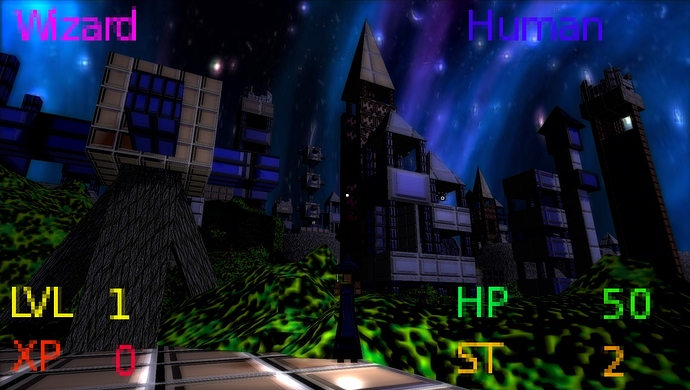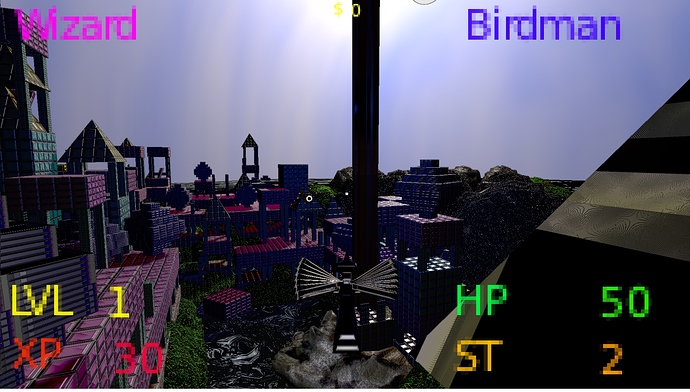Heyyyy here’s a BIG update!
I’ve been working on a game for some time, calling it many things, Dungeon Tweak, Dungeon Wizard… and I have decided that this game should be the definitive version of Commander^3, a buggy unplayable mess of a game I created a couple years ago. I will be sending “collector’s edition” DVD copies of this out to everyone who backed me on Kickstarter and was disappointed with the game they funded.
In Commander^3, an evil wizard has cast a spell on an 8-bit fantasy kingdom, transforming it into a 3d world. The noble Commander^2 has been transformed into Commander^3, and was transformed into a completely different creature and class than he was before.
In this physics-driven roguelike RPG, the player must guide Commander^3 through the Cube Tube, and unravel a preposterous plot involving conspiracies, virtual reality, and of course, the fate of the universe. Explore 100% destructible random dungeons, outsmart enemies, collect treasure, but beware of the dark wizard! If you encounter him (which you will), he will transform you into a random creature and class, and you must learn to utilize your new abilities.
Some abilities are straightforward. A Birdman can fly, and an Assassin has a gun. However, the dark wizard may pop out of a chest and transform you into an Architect Vegetable, in which case, you can build your own cubes, and can heal in water, but can only kill enemies by trapping them. Other abilities include explosive charges which only damage buildings, lasers, and more. There are 6 creatures and 6 classes, so 36 different possible characters.
On the sidelines, you will also be helping to rebuild the kingdom in 3D. After collecting enough money, you can build your own castle in the sky, which serves as your base of operations. You can level up each creature and class individually, but keep in mind you never know what you’ll turn into next.
Some classes and creatures start out pitifully weak, but will become strong later. A low level architect can only summon physics cubes that block an enemy’s path, but at the highest level, the architect builds an entire castle in a single mouse click, squashing everything around it. On the other hand, the knight may be good at killing enemies in the confines of dungeons, but the short range sword attack may leave you vulnerable during a boss fight… and what good is the Vegetable’s healing ability in a map where there is lava instead of water? With all the different creature/class combinations, the scenarios are endless.
The game’s soundtrack is mostly recycled retro-style synth tunes from the first Commander^3, with one new track. Much of the original soundtrack was probably never experienced by players due to the origina game’s crushing difficulty. The Dark Wizard will periodically speak to you in a deep booming digitized voice. Everything is designed to feel like a DOS shareware RPG was magically transported to 2014.
There are 5 different map types. After 100 dungeon levels, the player faces the final boss. After that, the game loops, so anyone can conceivably keep playing the game and leveling up forever.
If people actually like this game and accept it as an apology for its underwhelming predecessor, I will add more content.
Enjoy the new screens. It’s almost done.














